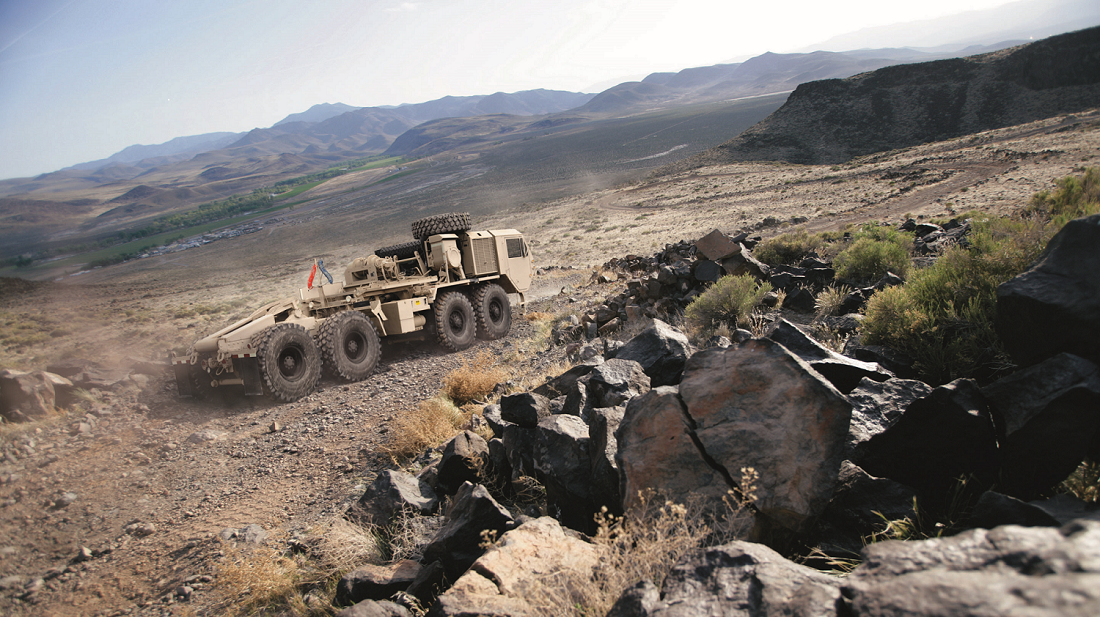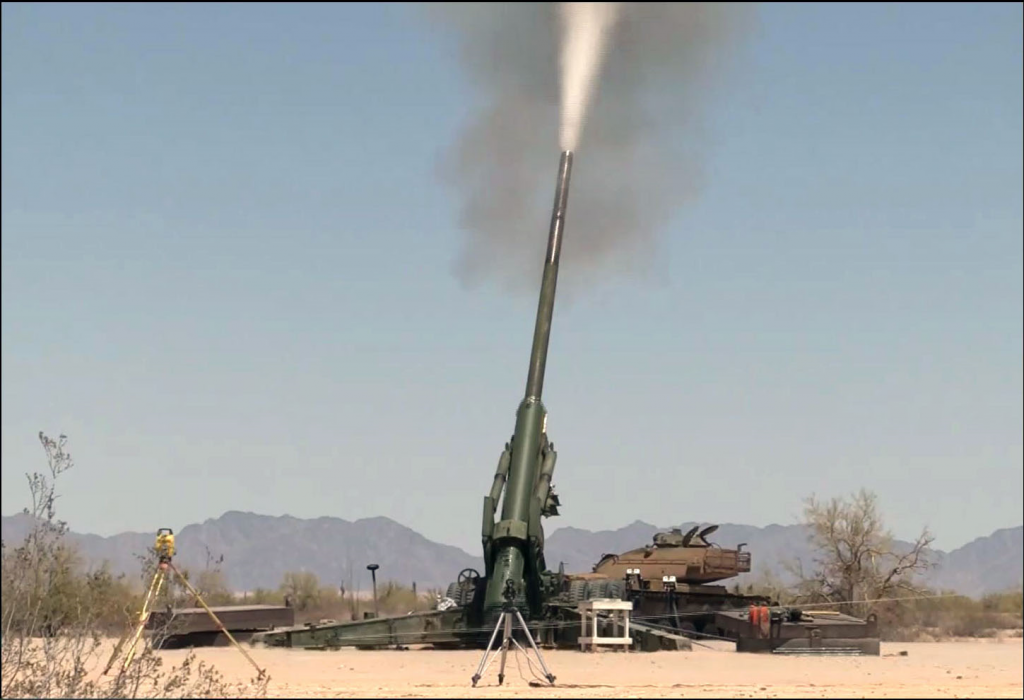
By Dr. Bruce D. Jette, Army Acquisition Executive
The Army is joining forces with industry to achieve land power dominance through science and technology.
The future Army must be ready to deploy, fight and win decisively against any adversary, anytime and anywhere, as well as to operate in a joint, multidomain, high-intensity conflict, while simultaneously deterring others and maintaining agility to conduct irregular warfare. While the Army has been at war, the world witnessed the value and impact that technology brings to the battlefield and how capabilities, enabled by such technology innovations, are critical to the success of our Soldiers.
Similarly, our adversaries studied the Army’s successes and challenges, then mimicked many of those successes and hence avoided many pitfalls in an attempt to bring themselves to near-peer status. However, they will not succeed in their efforts, because when it comes to creating and deploying cutting-edge technology, the keystone is research and development, empowered by the scientific workforce and how it views and solves problems.

Researchers from the U.S. Army Research Laboratory and the U.S. Army Tank Automotive Research, Development and Engineering Center make use of innovations from industry partner Diversified Technical Systems Inc. (DTS), which developed these Gen 1 ATDs—anthropomorphic test devices. (Photo courtesy of DTS)
Articles in this special edition highlight several Army modernization research activities designed for the Army to fight tomorrow’s wars with the right equipment. The Army’s science and technology (S&T) mission is to enable Soldiers to dominate the battlefield, both today and in the future. Research and development is a key part of the Army’s modernization strategy. It focuses on maturing technology, reducing program risk, developing technology demonstrators and experimental prototypes to better define affordable and achievable requirements, and conducting experimentation with Soldiers to refine new operational concepts.
S&T is an investment in the Army’s future, whereby we nurture innovation and drive toward new leap-ahead technologies with game-changing potential, evaluate technology and system vulnerabilities, and address issues such as affordability, sustainability, reliability and manufacturability early on during a system’s design phase.
The Army’s S&T enterprise comprises more than 25,000 scientists and engineers, including civilians and on-site contractors, who are essential to developing near-term fixes for our Soldiers’ urgent needs. The Army’s scientist and engineer network operationalized and delivered numerous capabilities to support Operation Iraqi Freedom and Operation Enduring Freedom during the better part of the last few decades. The understanding of Army operations forms the foundation of innovative mid- and far-term capabilities being developed for the Army of tomorrow.

The Army’s long-range precision fires priority seeks to restore Army dominance in range, lethality, mobility, precision and target acquisition. The Extended Range Cannon Artillery project at U.S. Army Yuma Proving Ground in Arizona includes the XM1113 projectile, which surpassed 60 kilometers in May, and the Hyper Velocity Projectile, which has exceeded Yuma’s testing space. (U.S. Army photo)
A FOCUSED EFFORT
The S&T enterprise is dedicated to continuously meeting the needs of the Soldier, but we compete with the private sector and academia for critical technology and technical talent. We must execute faster and with higher impact to address current capability shortfalls, outpace anticipated threats and defeat technology solutions being adopted by our adversaries.
Technology is global, and the Army competes for the highest-caliber technology and talent. To retain overmatch in an open and pervasive technological environment, we must apply our resources thoughtfully to develop and employ the technologies that will provide the greatest military advantage.
The secretary of the Army and the chief of staff of the Army have identified six modernization priorities that address our most pressing operational needs to ensure overmatch against potential near-peer competitors. Army research and development programs and resourcing have been realigned to focus on developing the six priority areas:
- Long-range precision fires—Platforms, capabilities, munitions and formations that restore Army dominance in range, lethality, mobility, precision and target acquisition.
- Next Generation Combat Vehicles—Combat vehicles that integrate other close combat capabilities in manned, unmanned and optionally manned teaming. These vehicles will leverage semi-autonomous and autonomous platforms in conjunction with the most modern firepower, protection, mobility and power generation capabilities necessary for our future combat formations to fight and win against any foe in any environment.
- Future Vertical Lift—A set of manned, unmanned and optionally manned platforms that can execute attack, lift and reconnaissance missions on the modern and future battlefield at greater range, altitude, lethality and payload.
- Network and command, control, communications and intelligence—An integrated system of hardware, software and infrastructure that is sufficiently mobile, reliable, user-friendly, discreet in signature and expeditionary to enable Soldiers to fight effectively in any environment where the electromagnetic spectrum is denied or degraded.
- Air and missile defense—A series of mobile integrated platforms, capabilities, munitions and formations that ensure that our future combat formations are lethal while remaining protected from modern and advanced air- and missile-delivered fires, including drones.
- Soldier lethality—A holistic series of capabilities, equipment, training and enhancements that span all fundamentals of combat, including shooting, moving, communicating, protecting and sustaining, to make our Soldiers more lethal and less vulnerable on the modern battlefield. This will include not only next-generation individual and squad weapons but also improved body armor, sensors, radios and load-bearing exoskeletons in concert with optimized human performance and decision-making.

The Heavy Expanded Mobility Tactical Truck A4 is one of the vehicles that will be used to demonstrate the Tactical Vehicle Electrification Kit, which aims to improve vehicle operational energy, range and future electrical systems. The kit reflects the Army priority to deliver Next Generation Combat Vehicles with the most modern firepower, protection, mobility and power generation capabilities. (Photo courtesy of Oshkosh Defense)
IN SEARCH OF INNOVATION
Innovation is an important part of the Army’s strategy to provide the right capability to the Soldier at the right time. The Army makes use of innovations from industry and other partners whenever possible, and we encourage industry to bring innovative technologies and solutions forward to explore the full ideation space and the art of the possible.
With approximately 23 million companies in the United States, the Army only does business with about 5,000 of them. Having recently come from industry and knowing the challenges associated with entering “the process” of defense acquisition, I submit that the Army must engage proactively and aggressively with all innovators to see what new ideas, concepts, systems and subsystem components they can demonstrate.
Private sector innovation, especially from nontraditional sources, is critical to the Army’s future. I have embarked on a new strategy for soliciting innovative, paradigm-breaking technologies from the startup and nontraditional community to support the Army’s modernization priorities. The first engagement within the new innovation strategy began in June 2018 with the launch of the Expeditionary Technology Search (xTechSearch). It serves as a catalyst for the Army to engage with the nontraditional business sector, driving American innovation to meet Army challenges and spurring economic growth.
Aimed at attracting game-changing innovation, xTechSearch will provide access and venues to pitch novel technology solutions directly to Army leadership. So far, xTechSearch has hosted several outreach events across the country to engage with American innovators and spark the development of leap-ahead technologies for the future Army. The Army will provide non-dilutive seed prizes—money that doesn’t require giving up shares of their businesses—for companies to demonstrate proof of concept for their technology solutions.
Strategic land power dominance is critical to the Army for prompt, sustained and synchronized operations with a force customized to the mission and poised to win in all domains. For the imaginable future, the nation’s land power dominance will continue to rely on significant S&T advances to ensure a competitive advantage.
We will look everywhere for opportunities to accelerate innovation and to deliver advanced technologies that enable our Soldiers to win decisively.
This article is published in the DASA(R&T) Special Edition of Army AL&T Magazine.
Subscribe to Army AL&T News, the premier online news source for the Acquisition, Logistics, and Technology (AL&T) Workforce.







